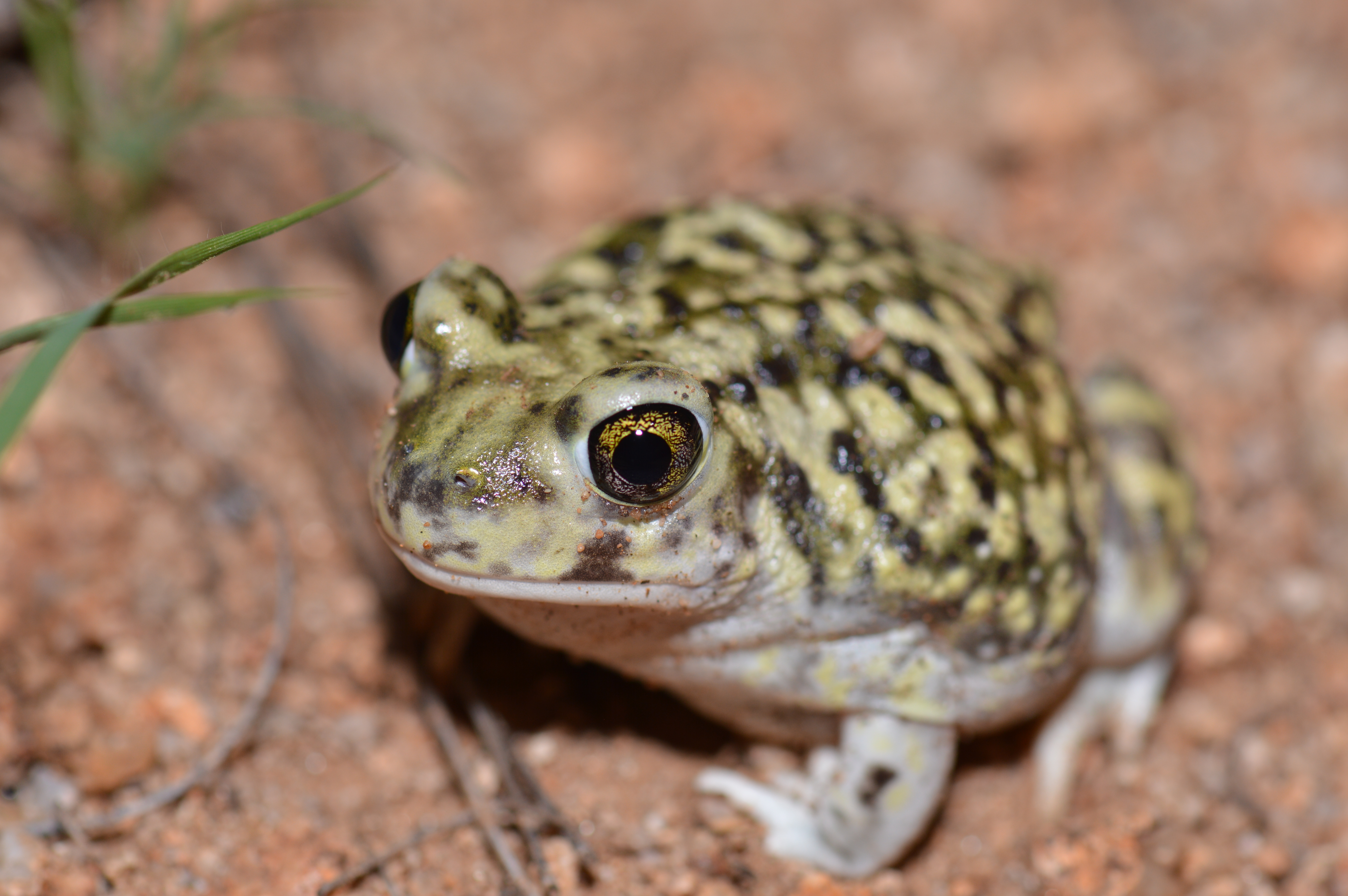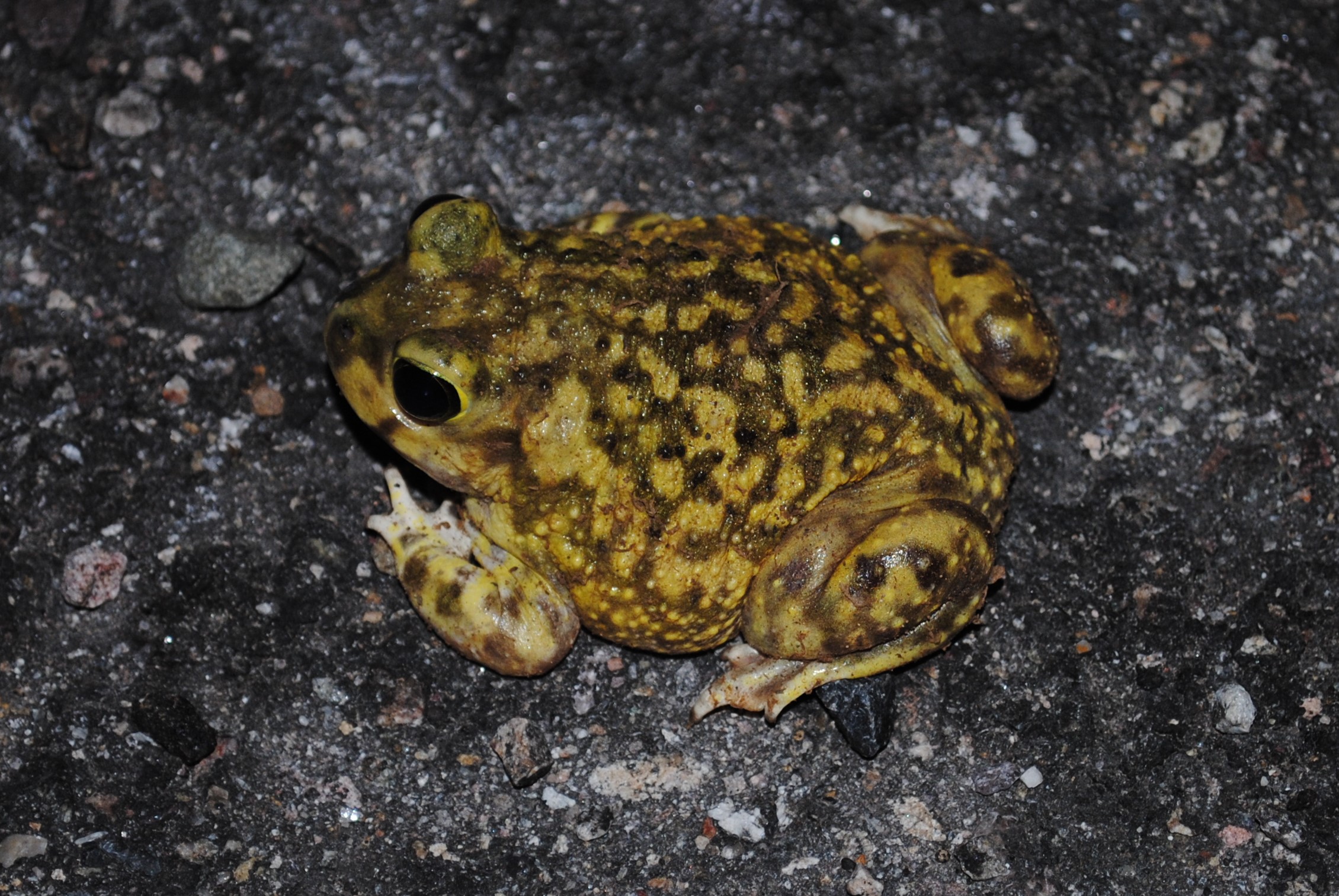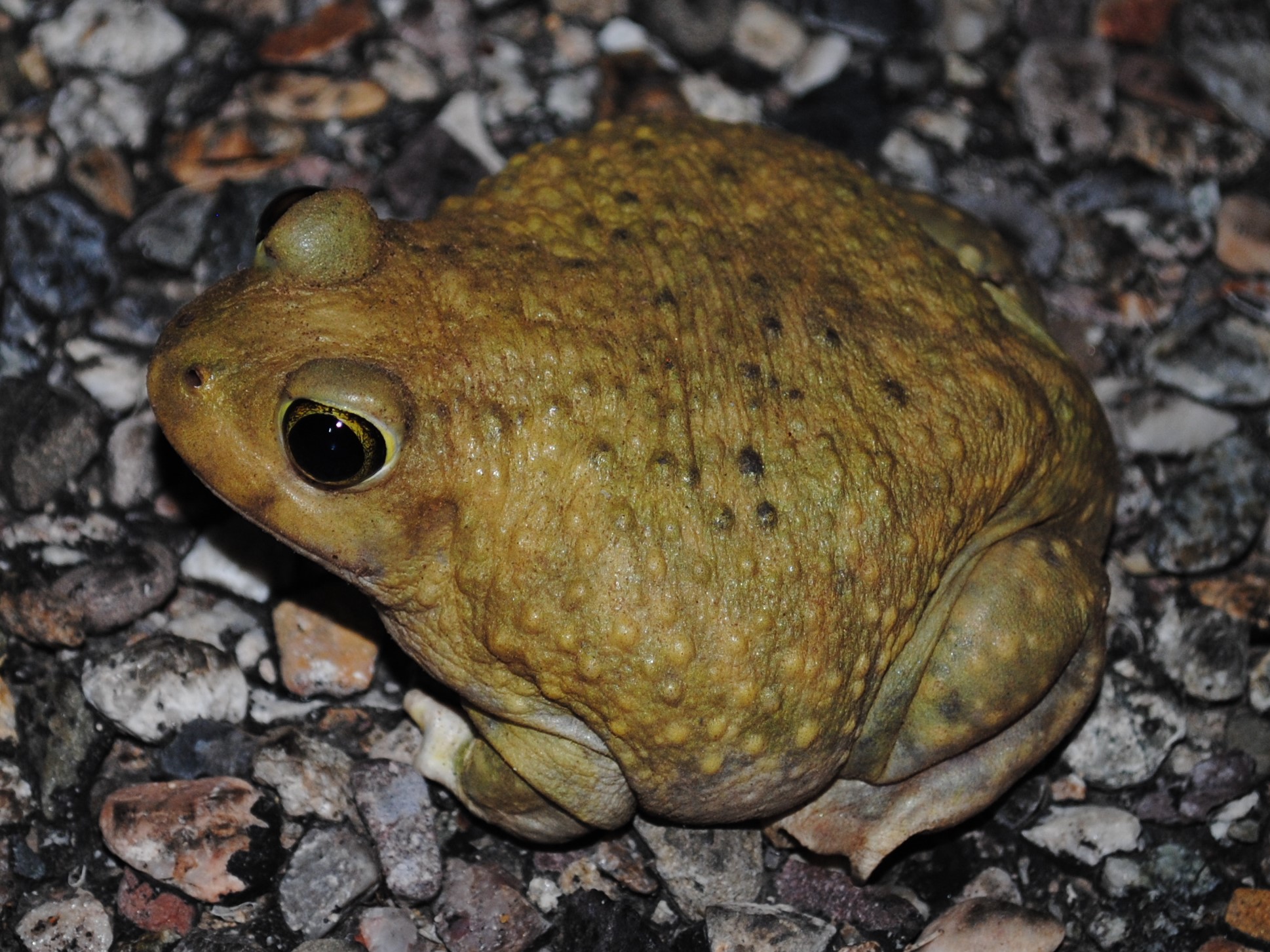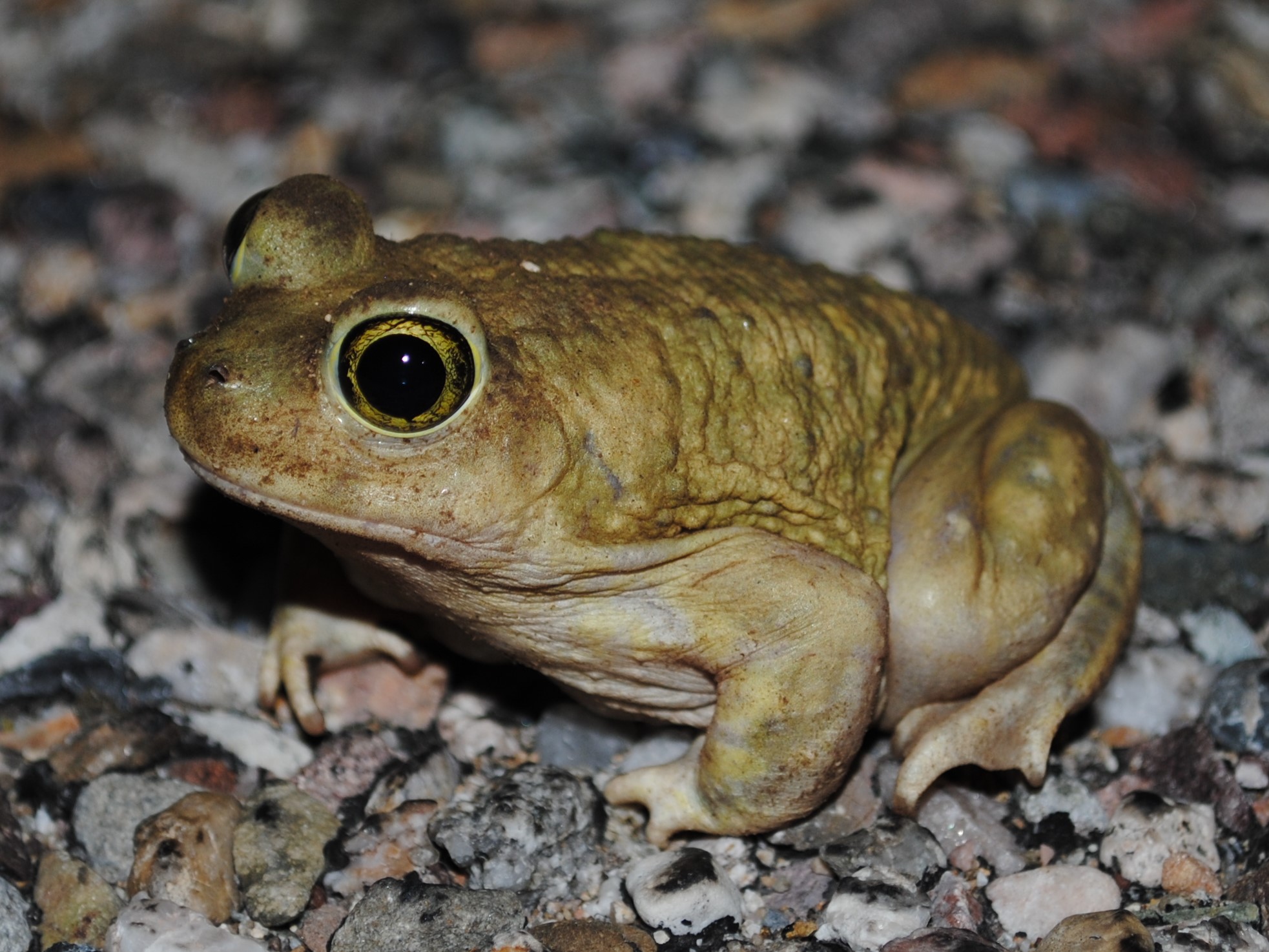Couch’s Spadefoot (Scaphiopus couchii)

Couch's spadefoot is a medium-sized amphibian with a stout body and robust limbs. It typically ranges in size from 2 to 3.5 inches (5 to 9 centimeters) in length. The skin is rough and covered in small warts or tubercles, which help to retain moisture and aid in camouflage.
One of the notable features of Couch's spadefoot is its specialized digging adaptations. It possesses a hard, keratinized "spade" on each of its hind feet, which it uses to burrow into the soil. This enables the toad to create temporary burrows during dry periods and escape extreme temperatures or predators.
The coloration of Couch's spadefoot can vary depending on the habitat and individual, but it generally ranges from light gray or tan to olive or reddish-brown. Some individuals may exhibit dark blotches or speckles on their back, providing camouflage against the sandy or rocky substrates of their habitat.
These toads are primarily nocturnal and spend much of their time underground in their burrows during the day. They emerge at night to forage for food and to breed. Couch's spadefoot is known for its ability to survive in arid environments, including desert regions, where it can experience extended periods of drought.
The diet of Couch's spadefoot consists mainly of insects, including beetles, ants, termites, and grasshoppers. They have a voracious appetite and can consume a large number of prey items in a short amount of time.
Breeding typically occurs after heavy rainfall or during the monsoon season. Males gather in temporary breeding ponds or pools and call out to attract females with their distinctive mating call, which sounds like a soft, nasal "waaa." After mating, the females lay small gelatinous egg masses containing dozens to hundreds of eggs, which hatch into tadpoles. The tadpoles develop rapidly in the water and undergo metamorphosis into tiny toadlets within a few weeks.
Couch's spadefoot toads play an important ecological role by controlling insect populations and serving as prey for other animals. They are well adapted to survive in harsh desert conditions, but they face threats such as habitat loss, habitat fragmentation, and road mortality.
Conservation efforts focus on protecting their natural habitats, preserving breeding ponds, and raising awareness about the importance of these unique amphibians in maintaining healthy ecosystems.
Please note that the information provided is based on available knowledge of Couch's spadefoot.
Further research and consultation with experts may yield more specific and updated information about their behavior, habitat, and conservation status.




